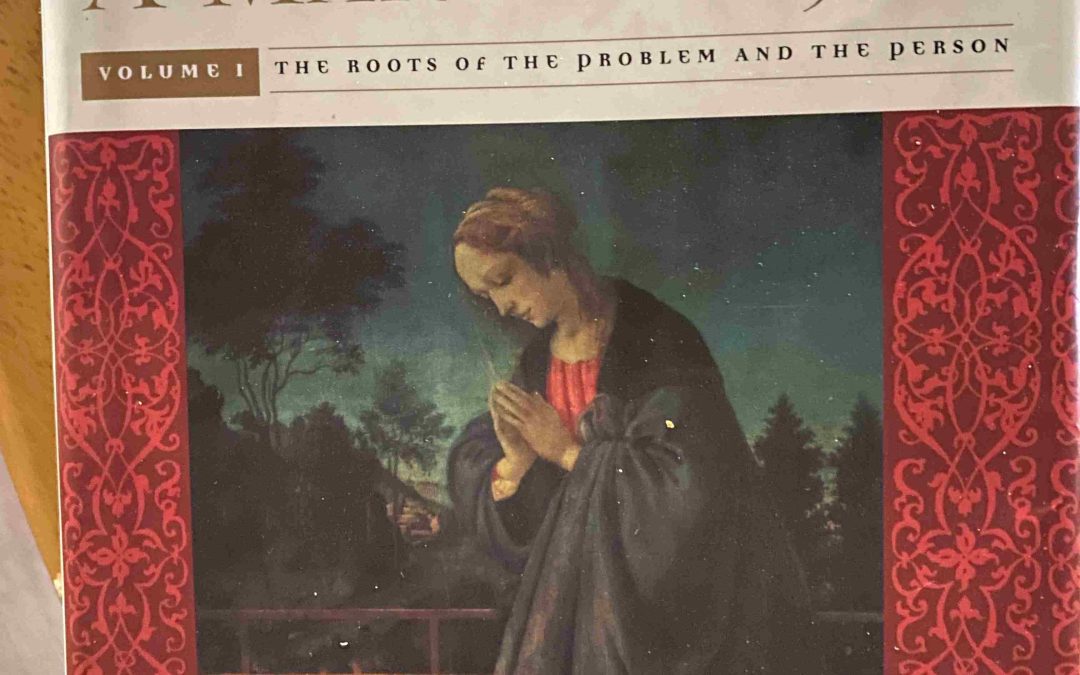Even though I am a magician, and I mostly write blogs about magic and entertainment, I am also an ordained Lutheran Pastor that serves a congregation in Annville, PA. As a result, I sometimes blog on matters concerning religion, and in this case, I thought I would do a review of Vol. 1 on John P. Meir’s massive 5 volume work on Jesus entitled “A Marginal Jew”.
In Mr. Meir’s words, the hope of this massive 5 volume work is to deal with one of history’s greatest puzzles. What is “the historical Jesus?” “I mean by this, the Jesus whom we can recover, recapture, or reconstruct by using the scientific tools of modern historical research.” Mr. Meir’s intent is to make his work accessible to both the general Christian reader and the scholarly community. He does this by attaching voluminous end notes to each chapter. In most cases, the end notes are longer than the written chapters giving great detail into his methods and the controversies in the scholarly community.
This is admirable, but a warning. Despite his best efforts, this is not a book for the general reader. While you do not have to be a trained biblical scholar to understand and appreciate it, you do need some knowledge of the scholarly tools that are used in both biblical research and historical research. He acknowledges that what he is doing is virtually an impossible task. There is just not enough documentation to know the historical Jesus in the same way we know about many famous men and women,
For one thing, Jesus left no written records of his own that survived. And the remaining evidence of Jesus in history are scarce, outside of the Gospel accounts of Jesus’ life and ministry, and of course, material found in the writings of Paul. There are also brief mentions of Jesus in works by Josephus and Tacitus but that is pretty much all in primary sources.
So, while we can never with 100% accuracy say we know Jesus, there are some tools that the historian can use to ascertain with a high probability of what is likely to be true. The author mentions a number of tests:
- The criterion of embarrassment – This basically means that if it is found in the sources, and it contributes to a negative picture of what the overall narrative is making, it more than likely is true – A prime example is the illustration of the baptism of Jesus by John – in this case, this would argue for the baptism to have taken place because the Gospels show some discomfort with it and go out of their way to show Jesus’ superiority to John
- The criterion of discontinuity – The author explains this means that if it is something that Jesus was doing that seems to stand out against what Jewish practice at the was doing and also what the early Church then did, it has a high degree of being likely because it seems somewhat out of place in context.
- The criterion of multiple attestation – This simply means is there several sources that cite it – In this case can it be found in Mark, Q, John, Paul, etc. – if so it comes from several different sources and is likely to be true
- The criterion of coherence – In essence, does the material make sense when evaluated keeping in mind the other criterion discussed above.
- The criterion of rejection and execution – I won’t get into detail about this one, but this concerns the actual arrest, trial and execution of Jesus and what lead to those events.
Based on these criterion, massive research, and utilizing the work of other scholars, Mr. Meier comes to a couple of conclusions that I do not think will surprise anyone, but he does believe these are as close to the truth as we can come.
First, when was Jesus born. There is a whole chapter on this discussion. Without going into all the details, Mr. Meier lays out a pretty convincing case that Jesus would have been born Somewhere around 7 or 6 BC. Next, he then makes a convincing case that Jesus began his public ministry toward the end of AD 27 or very beginning of 28, a ministry that lasted perhaps just over two years. Finally, in AD 30, on April 6th he celebrated his last meal with his disciples, was arrested, tried and executed on April 7th, AD 30.
As a Pastor, I do not know if Mr. Meier is correct. Even he cannot state, with 100% certainty, that he is correct in his assessment. But he painstakingly examined the evidence, and, makes a strong case for his conclusions with the evidence presented.
I found his work interesting, inciteful, scholarly, and useful. However, it is not a “relax at the beach fun read book”. It is a serious scholarly work that I know has invited great discussion among Biblical scholars. I highly recommend it.
About the author: Michael L. Reist, The Amazing Magi, is a professional magician who performs all over the NE United States. He is also the Pastor of St. Mark Lutheran Church. He lives in Annville, PA with his wife Kathy and their pets.


Recent Comments